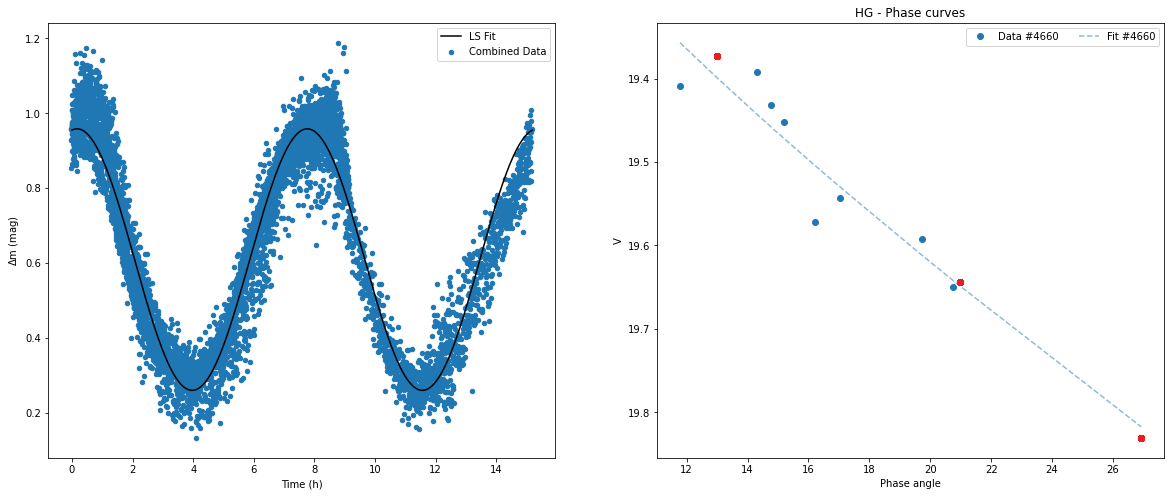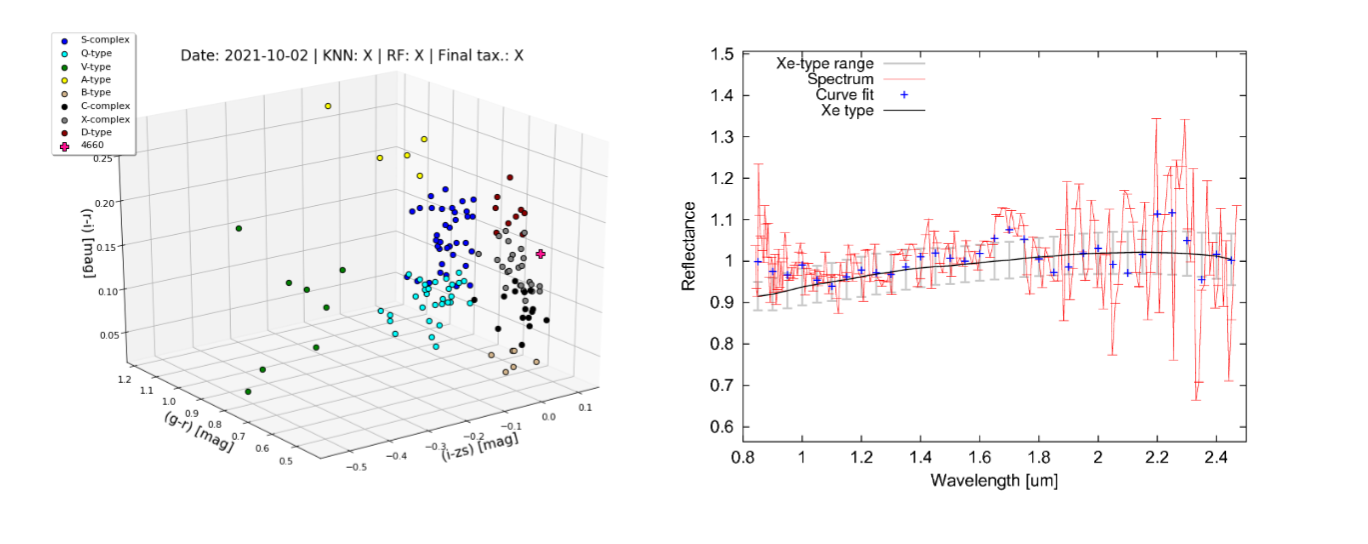- 1Astronomical Institute of the Romanian Academy, 5 Cuțitul de Argint, 040557 Bucharest, Romania
- 2Instituto de Astrofísica de Canarias (IAC), C. Vía Láctea, 1, 38205 San Cristóbal de La Laguna, Tenerife, Spain
- 3Departamento de Astrofísica, Universidad de La Laguna, 38206 La Laguna, Tenerife, Spain
- 4Astroclubul București, Bulevardul Lascăr Catargiu 21, 010663 Bucharest, Romania
- 5Isaac Newton Group of Telescopes (ING), Apto. 321, E-38700 Santa Cruz de la Palma, Canary Islands, Spain
- 6Institute of Space Science (ISS), 409, Atomistilor Street, 077125 Magurele, Ilfov, Romania
- 7University of Amsterdam, Faculty of Science, 1090 GE Amsterdam, The Netherlands
- 8Faculty of Sciences, University of Craiova, Craiova, Romania
- 9Nordic Optical Telescope, Rambla José Ana Fernández Pérez 7, ES-38711 Breña Baja, Spain
- 10Department of Physics and Astronomy, Aarhus University, Ny Munkegade 120, DK-8000 Aarhus C, Denmark
- 11Department of Earth and Planetary Science, University of Tokyo, Tokyo, Japan
Introduction
The asteroid (4660) Nereus is considered one of the most accessible targets for a rendez-vous space mission. It was proposed as a possible target for the NASA Near-Earth Asteroid Rendezvous (NEAR) and for JAXA Hayabusa spacecraft.
The lightcurve analysis and the radar shape modeling revealed a long rotational period of ≅ 15.16 ± 0.04 h [1, 2]. The radar [2] and thermal [3] observations report optical albedo values of 0.54 (-0.09, +0.03) and 0.55 ± 0.17 respectively. Coupled with the featureless spectrum [4], Nereus is classified as an E-type object in the Tholen taxonomy. This class has been associated with enstatite achondrite meteorites.
During the fall of 2020 and the beginning of 2021, (4660) Nereus made a favorable apparition for observations with ground-based telescopes. It had an apparent magnitude brighter than 18.5 V mag. for about 7 months. The peak brightness was 12.9 on the night of December 7. In this context, we performed an extended characterization using various telescopes. Thus, we report light-curves, spectro-photometric data and spectral observations for Nereus.
Observations
We obtain the light curve of (4660) Nereus using the T025-BD4SB, a 0.25 m aperture telescope located at the Bucharest Astronomical Institute , Romania. About 65 hours of observations were obtained during 8 nights spread between October 27 and November 25, 2021. These data were acquired using the QHY294M CMOS camera.
The color indices in the visible region were determined using the MuSCAT2 instrument of the 1.52 m Telescopio Carlos Sanchez (TCS) located in Tenerife, Spain. This instrument allows simultaneous images with the broad band filters g (0.40 - 0.55 μm), r (0.550 - 0.70 μm), i (0.70 - 0.82 μm), and zs (0.82 - 0.92 μm). As such, we gathered 15.2 hours of data during six nights of observations spread over October 02, 2021 until April 02, 2022.
Additional photometry data was obtained using the 2.54 m Isaac Newton Telescope (La Palma, Spain) equipped with Wide Field Camera (WFC). We obtained 6 hrs of photometric observations using the B, V, R Johnson filters, and the r and z SDSS filters during the nights of March 2, and April 18, 2022.
The spectrum in the near-infrared region was obtained using the 3.58m Galileo National Telescope (La Palma, Spain). We used the near-infrared camera spectrometer (NICS) with the AMICI prism and a a.5 arcsec slit-width. The configuration allowed a resolving power of R=50 and a spectral interval coverage of 0.8 - 2.45 μm.
The photometric data reduction has been made using the Photometry Pipeline [5]. We also used IRAF and MP0 Canopus to cross-check the results. The spectral data was reduced using a dedicated pipeline written in Python.
Results
First we performed a photometric analysis of the asteroid (4660) Nereus. We determined its period using the Lomb-Scargle Periodogram and we investigated the YORP effect on the asteroid. Subsequently, we obtained the object's phase curve and we computed its absolute magnitude (H) and the slope parameter (G). Then we determined its color indices and we used them for classification. Finally, we reviewed its taxonomic classification based on the new acquired spectrum.

Fig 1: Left: The folded lightcurve of (4660) Nereus obtained by combining
the data from T025-BD4SB and TCS. Right: Phase curve of (4660) Nereus. The
red points are TCS observations while the blue ones are T025-BD4SB. The
dotted line represents the H-G model fit.
The Lomb-Scargle periodogram peaks at a value of 15.19 hrs. The light-curve corresponding to this period is plotted in Fig. 1. This value is in the range reported by [1] determined a period of 15.1 ± 1.2 h. It is also compatible with the value obtained using radar data [2] of 15.16 ± 0.04 h.
Because of its size, (4660) Nereus is subjected to the YORP effect which affects the asteroid's spin rate. We estimate a change of one to four seconds for its rotation period in a range of 10 years. Unfortunately, the previous values for its rotation period have much larger uncertainties. As such, another favorable observing window is needed to quantify this effect.
Furthermore, we determine the phase curve of the asteroid in order to obtain its absolute magnitude. In order to do this, we use the Pyedra software [6]. The algorithm allowed us to use the H-G model [7] in order to fit our phase curve (Fig. 1). We obtained the absolute magnitude (H = 18.69 ± 0.18) and the slope parameter (G = 0.209 ± 0.06). In Fig. 1 we show our results. For comparison, [8] reported a value of 18.58 ± 0.06.

Fig 2: Left: The color-color diagram of (4660) Nereus compared with the reference data-set (Popescu et al. 2022 - paper in preparation). Right: The near-infrared spectrum of (4660) Nereus and its taxonomic classification.
The TCS/MuSCAT2 instrument allowed us to simultaneously obtain the light-curve in all four filters. We found (g-r) = 0.537 ± 0.048, (r-i) = 0.145 ± 0.012, (i-zs) = 0.091 ± 0.017. In addition to these values, we obtained the (B-R) = 1.15 ± 0.05 mag, and ± = 0.043 ± 0.03 mag color indices.
The average color values obtained with TCS/MuSCAT2 are compatible with an X-complex classification (Fig. 2). This result complements the spectral classification based on the data obtained with TNG/NICs instrument. The spectrum shown in Fig. 2 is compatible with the Xe type.
Acknowledgments
The work of MP and RMG was supported by a grant of the Romanian National Authority for Scientific Research -- UEFISCDI, project number PN-III-P1-1.1-TE-2019-1504. The work of MP, JdL, JL, and DM is made in the framework of EU-funded project "NEOROCKS project", SU-SPACE-23-SEC-2019 from the Horizon 2020 - Work Programme 2018-2020. The observations were obtained trough the EURONEAR collaboration.
[1] Y. Ishibashi et al, 2000, Earth, Planets and Space
[2] Marina Brozovic et al, 2009, Icarus
[3] Marco Delb ́o et al, 2003, Icarus
[4] Richard P. Binzel et al, 2004, Asteroids II
[5] M. Mommert, 2017, Astronomy and Computing
[6] M. Colazo et al, 2022, Astronomy and Computing
[7] Edward Bowell et al, 1989, Asteroids II
[8] Y. Ishibashi et al, 2000, Advances in Space Research
How to cite: Mansour, J. A., Popescu, M., de León, J., Berteșteanu, D., Morate, D., Văduvescu, O., Licandro, J., Dumitru, B. A., Simion, G. N., Gherase, R. M., Pinter, V., and Tatsumi, E.: Physical characterization of asteroid (4660) Nereus, Europlanet Science Congress 2022, Granada, Spain, 18–23 Sep 2022, EPSC2022-984, https://doi.org/10.5194/epsc2022-984, 2022.

